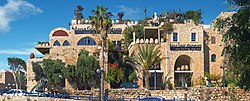
The Art Gallery of Ontario is an art museum in Toronto, Ontario, Canada, located in the Grange Park neighbourhood of downtown Toronto, on Dundas Street West. The building complex takes up 45,000 square metres (480,000 sq ft) of physical space, making it one of the largest art museums in North America and the second-largest art museum in Toronto, after the Royal Ontario Museum. In addition to exhibition spaces, the museum also houses an artist-in-residence office and studio, dining facilities, event spaces, gift shop, library and archives, theatre and lecture hall, research centre, and a workshop.
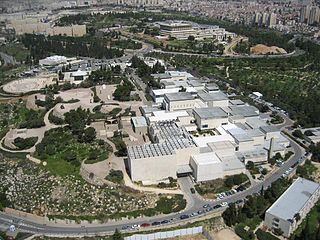
The Israel Museum is an art and archaeology museum in Jerusalem. It was established in 1965 as Israel's largest and foremost cultural institution, and one of the world's leading encyclopaedic museums. It is situated on a hill in the Givat Ram neighborhood of Jerusalem, adjacent to the Bible Lands Museum, the National Campus for the Archaeology of Israel, the Knesset, the Israeli Supreme Court, and the Hebrew University of Jerusalem.

Tel Aviv Museum of Art is an art museum in Tel Aviv, Israel. The museum is dedicated to the preservation and display of modern and contemporary art from Israel and around the world.

The Dallas Museum of Art (DMA) is an art museum located in the Arts District of downtown Dallas, Texas, along Woodall Rodgers Freeway between St. Paul and Harwood. In the 1970s, the museum moved from its previous location in Fair Park to the Arts District. The new building was designed by Edward Larrabee Barnes and John MY Lee Associates, the 2007 winner of the American Institute of Architects Gold Medal. The construction of the building spanned in stages over a decade.

Nancy Graves was an American sculptor, painter, printmaker, and sometime filmmaker known for her focus on natural phenomena like camels or maps of the Moon. Her works are included in many public collections, including those of the National Gallery of Art, the Brooklyn Museum of Art, the Smithsonian American Art Museum, the National Gallery of Australia (Canberra), the Des Moines Art Center, Walker Art Center (Minneapolis), and the Museum of Fine Arts. When Graves was just 29, she was given a solo exhibition at the Whitney Museum of American Art. At the time she was the youngest artist, and fifth woman to achieve this honor.

The National Gallery of Denmark is the Danish national gallery, located in the centre of Copenhagen.

Ilana Raviv-Oppenheim is a multidisciplinary artist. Her work spans a variety of media including painting, drawing, etching, tapestry, and ceramic sculpture.
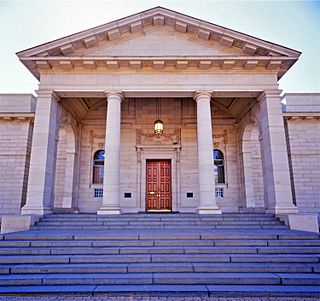
The Johannesburg Art Gallery is an art gallery in Joubert Park in the city centre of Johannesburg, South Africa. It is the largest gallery on the continent with a collection that is larger than that of the Iziko South African National Gallery in Cape Town.
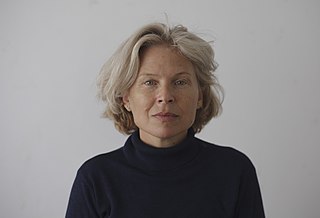
Sigalit Landau is an Israeli sculptor, video and installation artist.

Adela Akers was a Spanish-born textile and fiber artist residing in the United States. She was Professor Emeritus at the Tyler School of Art. Her career as an artist spans the "whole history of modern fiber art." Her work is in the Renwick Gallery, the Metropolitan Museum of Art and the Museum of Art and Design. Her papers are at the Archives of American Art.

Tamar Getter is an Israeli artist and teacher.

Visual arts in Israel or Israeli art refers to visual art or plastic art created by Israeli artists or Jewish painters in the Yishuv. Visual art in Israel encompasses a wide spectrum of techniques, styles and themes reflecting a dialogue with Jewish art throughout the ages and attempts to formulate a national identity.
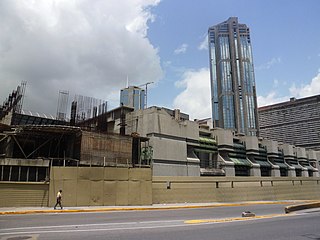
The National Art Gallery also known as Gallery of National Art is located in the Plaza Morelos area of Caracas, Venezuela. The museum opened in May 1976. In 2009 it moved to a new building designed by Carlos Gómez de Llerena, Venezuela's largest museum building.
Ilana Salama Ortar is an interdisciplinary visual artist whose work focuses on issues of migration, uprooting, exile and architecture of emergency.

Ralli Museum is a conglomerate of two private art museums under the same name, located in Caesarea, Israel. Both are part of the Ralli Museums international foundation.

The Montana Museum of Art & Culture, or the MMAC, is a University of Montana art museum in Missoula, Montana with a collection of over 11,000 objects, many of which are of the contemporary American West.

Lia Cook is an American fiber artist noted for her work combining weaving with photography, painting, and digital technology. She lives and works in Berkeley, California, and is known for her weavings which expanded the traditional boundaries of textile arts. She has been a professor at California College of the Arts since 1976.
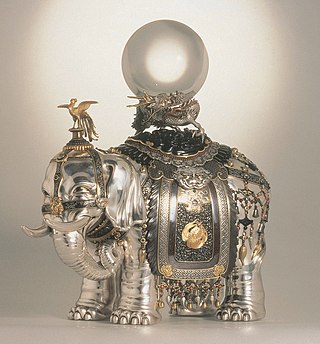
The Khalili Collection of Japanese Art is a private collection of decorative art from Meiji-era (1868–1912) Japan, assembled by the British-Iranian scholar, collector and philanthropist Nasser D. Khalili. Its 1,400 art works include metalwork, enamels, ceramics, lacquered objects, and textile art, making it comparable only to the collection of the Japanese imperial family in terms of size and quality. The Meiji era was a time when Japan absorbed some Western cultural influences and used international events to promote its art, which became very influential in Europe. Rather than covering the whole range of Meiji-era decorative art, Khalili has focused on objects of the highest technical and artistic quality. Some of the works were made by artists of the imperial court for the Great Exhibitions of the late 19th century. The collection is one of eight assembled, published, and exhibited by Khalili.
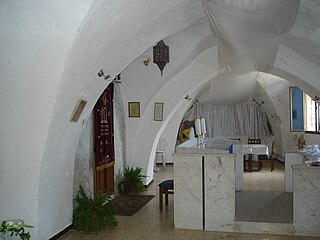
The Libyansynagogue of Jaffa is an Mizrahi Jewish synagogue built inside a former hotel in 1948 by Jewish immigrants from Libya. Located on RehovMazal Daggim, the Pisces (Fish) Street, in the historical part of Jaffa, it is the oldest synagogue in Tel Aviv-Yafo.
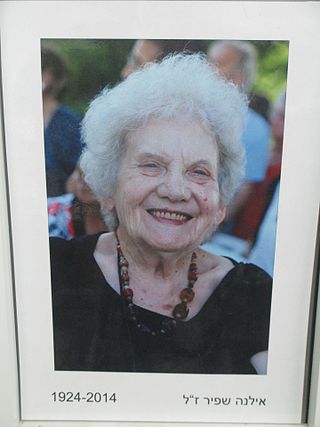
Ilana Shafir was an Israeli mosaic artist, globally known for her unique style spontaneous mosaic, a technique in which the artistic work emerges without prior painting unlike the traditional mosaic work. Since the 1960s, she fashioned “extraordinary works mixing figurative and abstract motifs” in her studio in Ashkelon.
